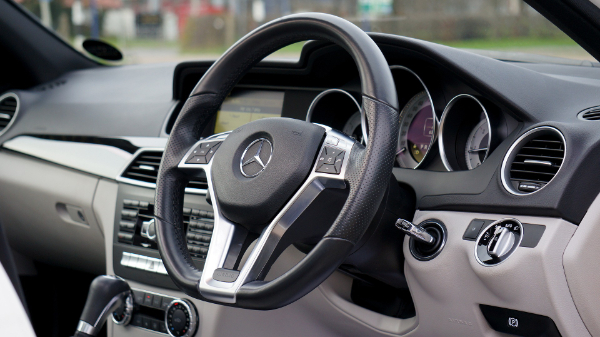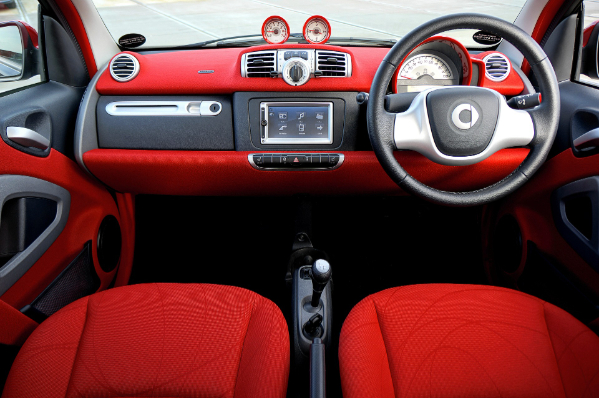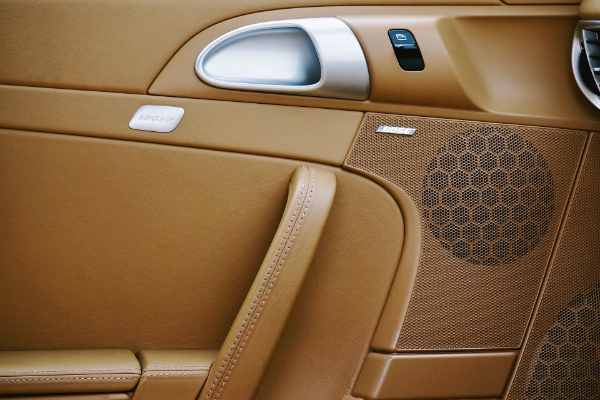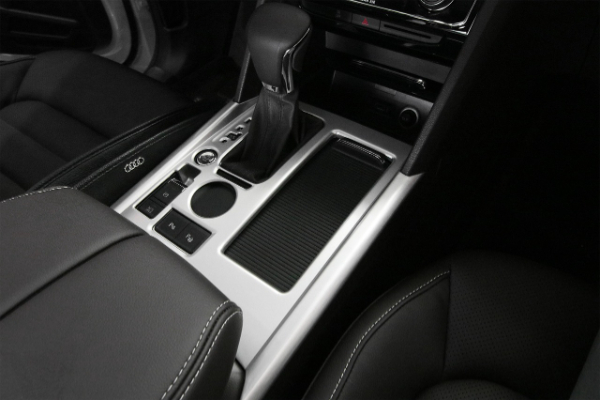Understanding Automotive Leather
One of the most prevalent types of leather that many manufacturers worldwide use when creating modern cars is pigmented leather. .
Pigmented leather is pure animal hide, and to achieve the colour and texture desired by the designer, it is washed thoroughly, tanned and dyed.
Once a vehicle has been harvested from its source is goes through the whole washing and tanning process.
Chrome tanning is an overall process used predominantly for automotive leather. It refers to the chromium sulphate utilised across the entire dyeing process

Tanning is a relatively complicated technique involving a lime bath that allows for any hair and water to be removed from the hide in the car manufacture industry.
Professionals will then rehydrate the leather, immersing it fully into the chrome acid bath. The process curates results that give the leather hide a blue hue, and this implies the material is ready for dyeing and almost finished.
How to Clean Leather Car Seats
What do I need when cleaning leather car seats?

Ensuring clean your leather car seats on the inside of your car may not be at the top of your to-do list. However, it is good to keep up the maintain to enhance the car's interior and the outside appearance.
It will also allow you to preserve the quality leather for much longer, and therefore, there will be less need to replace it over time.
When cleaning the outside of your car, all needed is a hose, sponge, or a bucket of soapy water. The car interior can sometimes seem like a much greater task and more challenging job overall.
Equipment Required
You'll be happy to know that you don't require a large amount of equipment when it comes to cleaning your car seat leather. Many of the tools necessary for cleaning the inside of your car are:
Gently use a clean set of dry microfibre cloths, ensure these aren't of rough or ragged material. They must be soft so that they don't obstruct the fabric of the commercial leather or its protective coating.
A vacuum cleaner and an optional air compressor.
Spray bottles of water and any suitable related articles or cleaning products that won't damage the leather.

And finally, everything will be fine as long as you use a brush with delicate bristles, or for smaller, hard to reach areas get a spare toothbrush with soft bristles.
Many of these things may potentially be lying around your home. However, if not, you can acquire many of these at any DIY or local automotive shop. You can even search online at Amazon or on eBay; you may get next day delivery.
What products can I use to clean leather car seats?
Shop Bought Leather Cleaners
For those that prefer to keep manufactured cleaning and conditioning products in their household, you want to ensure all of them have formulas equipped for car leather seat cleaning.
Avoid any generic products or multi-surface washes or light soaps, and it must be specific to car leather for it to be most effective.

These products may cause your leather material to dry up and begin to tear or create holes over time. Be wary of waxes, oil products and silicone as greasy effects could be harmful to the fabric.
You're going to want to look for a wash that isn't oily or too harsh on the leather but is still strong enough to enhance the look of the fabric, taking away any discolouration and lifts gunk and grime from the dirty surfaces.
Leather wipes are also handy to keep with you or inside your car. They allow you to have some TLC and frequent upkeep on your interior maintenance.
It is a good idea to invest in a car seat water-based conditioner that has a neutral pH.
Your job will then be a hundred times easier with a high-quality conditioner with no underlying chemicals or plastic. It will give your interior and leather upholstery a fantastic, glistening shine finish, replenishing its natural oils.
If you are working with a tight budget and want to use household items before branching out to another product, you can use your laundry detergent cleaning solution or even gentle dish soap.
You can fill an empty spray bottle with lukewarm water and one whole or half a teaspoon of laundry detergent.
Vinegar is an excellent cleaning resource and works wonders for various items and rooms across your household; the kitchen, windows, mirrors, bathrooms, etc. It works as a fantastic antibacterial cleaner, and you may find it in almost every kitchen cupboard.
You'll want to use it on a colder day so that the heat doesn't enhance the smell. Use a spray bottle with three-quarters of vinegar and top it up with warm water.
Numerous industries, companies and individuals have highly praised coconut oil for its multiple benefits in multiple areas.
After thoroughly cleaning your interior, coconut or olive oil can substitute for gentle leather conditioners. Use it in small quantities and use a dry soft cloth that won't obstruct the leather material in any way.
Try it first on a small, hidden or discrete area as it may react differently to different styles or another type of leather.
Baking soda is a natural stain remover for various aspects; it is a prevalent choice when getting rid of challenging stains. Begin to mix it into a thin paste with water.
You can then sprinkle it carefully over your leather, allowing it to absorb any existing stains before gradually wiping it all away.
However, it is essential to remember that baking soda reacts differently with multiple objects or materials. It can be harsher on some than others. It may be a better option, if you are worried, to stick to specific leather cleaning products.
Do's and Don'ts of Leather Car Seat Cleaning
Here is a list of handy tips detailing the DO's and DON'T's and everything you need to know when it comes to leather car seat cleaning.
Ensure you do a spot-test on any leather cleaner you buy. Try them on hidden areas to see if the product is suitable for the leather.
Vacuum thoroughly before applying any cleaning products; this will prevent and get rid of any loose surface dirt, grime, or sand from scratching and obstructing the fabric on your seats.
Work slowly and clean in small sections; this will allow you to minimise discolouration.
Use microfibre cloths, towels and flannels; they are far softer. They won't scratch and ruin your material surfaces.
Search for a cleaning product or conditioner that has natural ingredients and is non-toxic.
Mix your vinegar solution with warm water to not be too harsh when applying it to your seats.
Clean your car's leather seats and interior as regularly as possible and ensure that you condition them occasionally. You can condition two or three times a year and provide you with clean seats once a month.
Ensure you never spray the cleaner directly onto your leather seats, especially in the case of cars with perforated leather.
Dampen all your microfibre cloths with your chosen cleaning solution.
Never use conditioners that include waxes or petroleum; they can lead to build-up or grease and grime or dull the leather's finish.
Don't let any wet solutions dry on the seats without wiping them dry. Massage them carefully with your flannel or cleaning cloth until fully absorbed.
Ask the original owner or your dealer if you struggle with which products would be most suitable to keep your car seats clean.
Don't use any without consultation if you are genuinely unsure.
Never use stiff bristles when deep cleaning the leather, and make sure you never scrub too hard. Choose softer car-made cleaning brushes or a soft-bristled toothbrush for smaller surface dirt areas.
You don't want to budget too much when searching for a high-quality natural car cleaner. Whilst they are more expensive, they'll enhance and bring out the beauty of your clean car leather.
Too much liquid can ultimately damage the seat fabric, mainly if you have acquired a car with perforated leather seating, which could soak through and create mould or breed mildew.
Local Business provide classic car interior restoration for Leicester, Leicestershire and the surrounding areas. If you would like to follow up on any of our services, or if you would like to contact us, then please, follow one of the links below:
